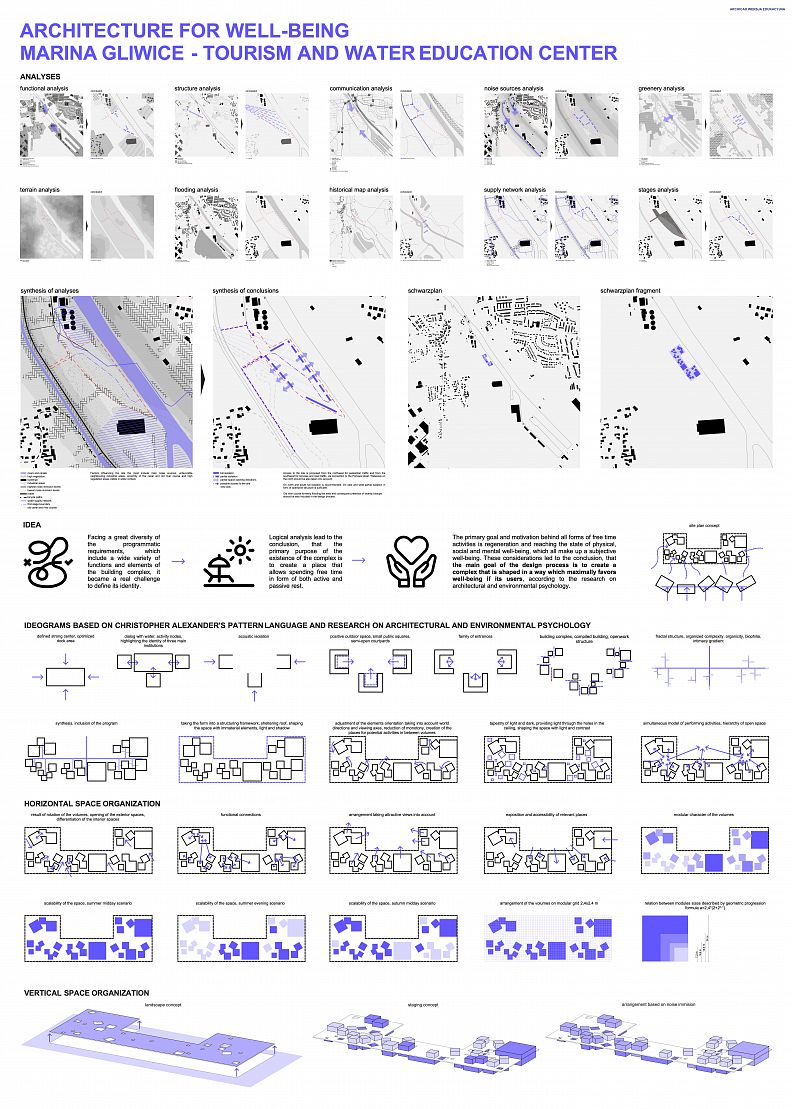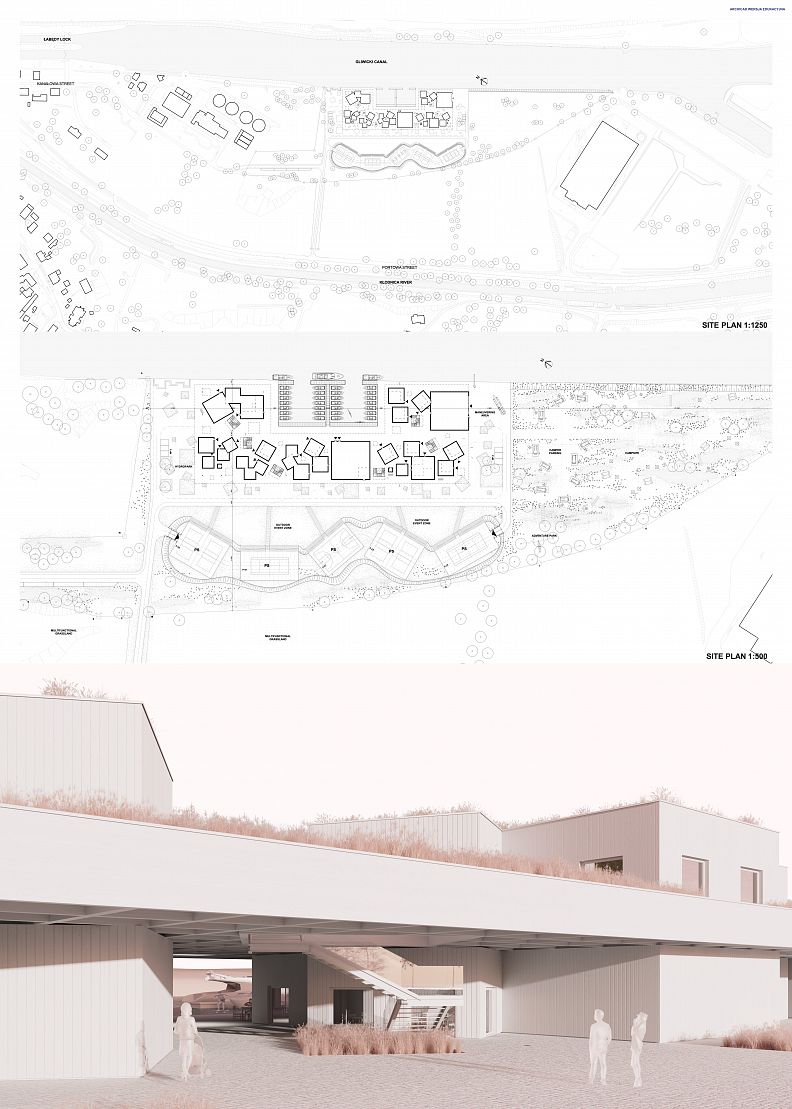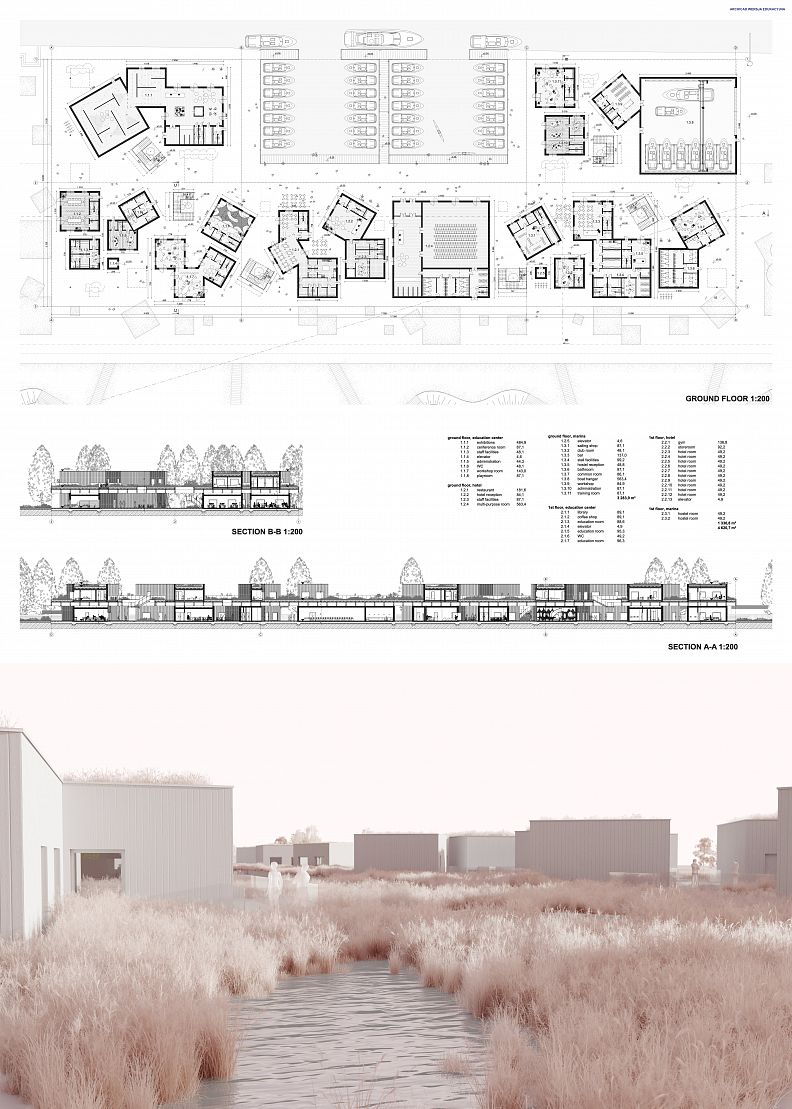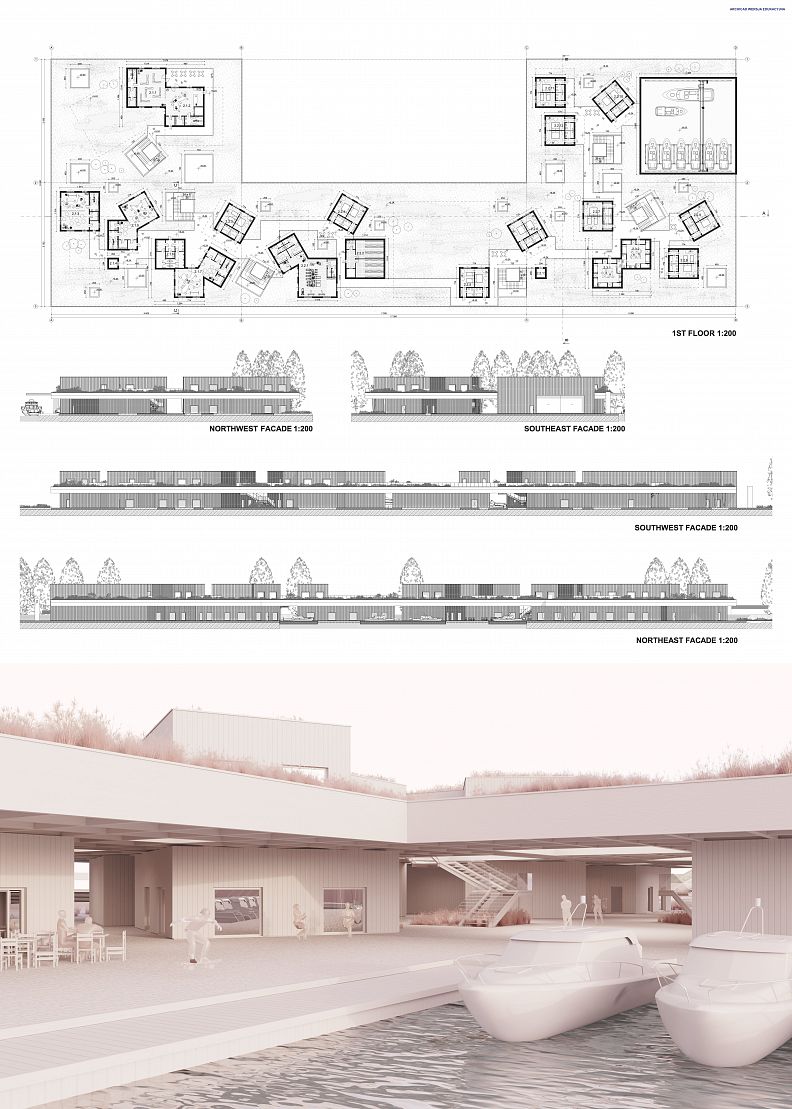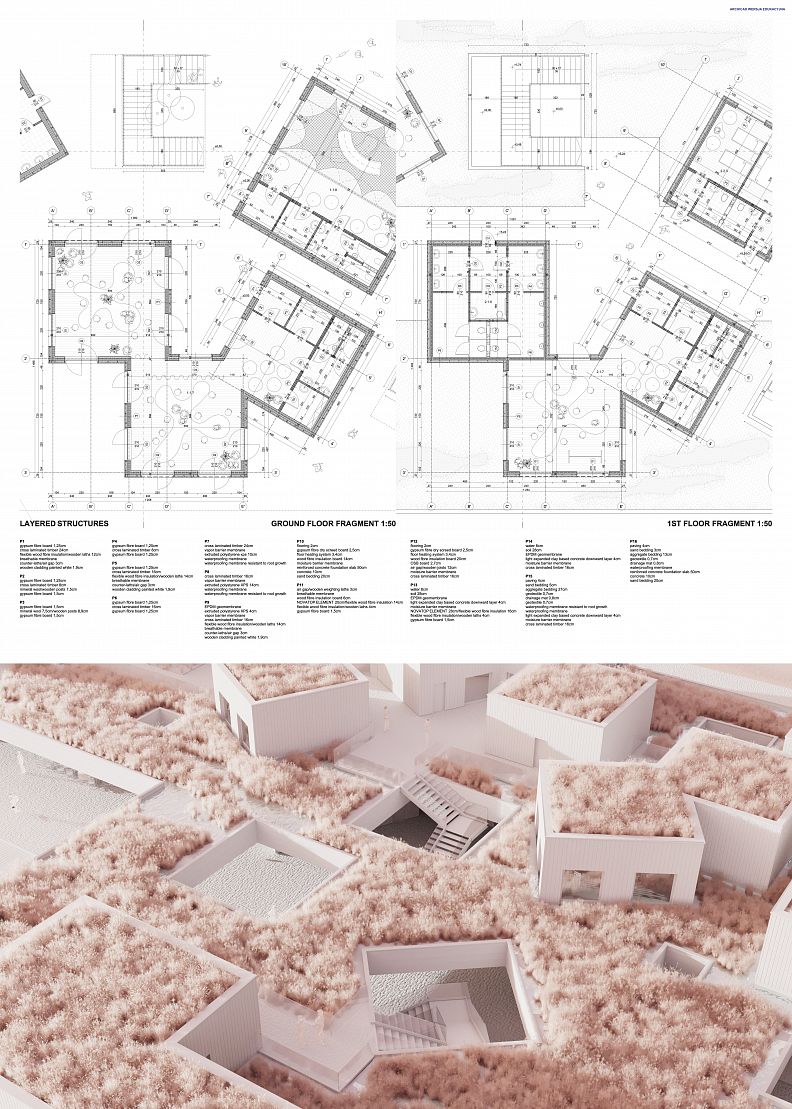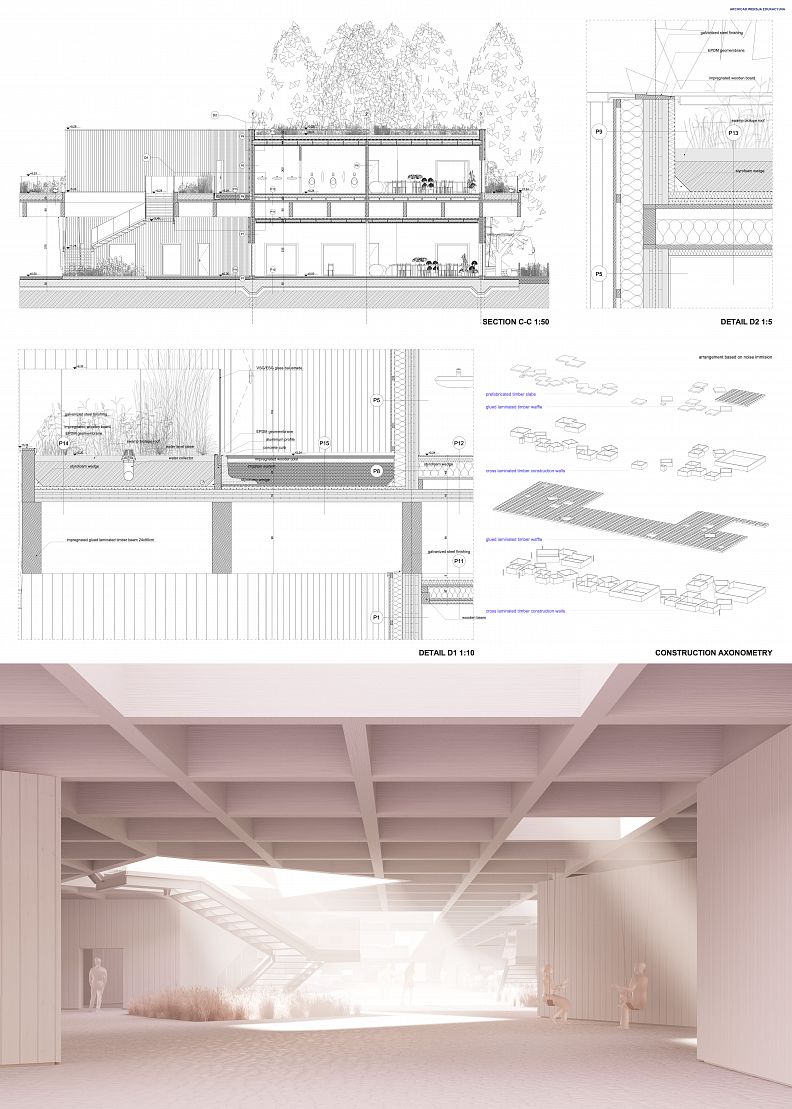Architecture for well-being - Marina Gliwice - Tourism and Water Education Center

Project idea
Facing a great diversity of the programmatic requirements, which include a wide variety of functions and elements of the building complex, it became a real challenge to define its identity.
Logical analysis led to the conclusion, that the primary purpose of the existence of the complex is to create a place that allows spending free time in form of both active and passive rest.
The primary goal and motivation behind all forms of free time activities is regeneration and reaching the state of physical, social and mental well-being, which all make up a subjective well-being. These considerations led to the conclusion, that the main goal of the design process is to create a complex, that is shaped in a way which maximally favors well-being if its users, according to the research on perception, architectural and environmental psychology.
Project description
Based on the research on perception, architectural and environmental psychology, set of desirable factors and features was created. All steps of the design process use at least one of them.
Project is oriented around the strong center created by a dock, which is a curiosity arousing point, activity node, that has psychological effect and attracts people thanks to water presence and many events, movement and living happening there. Volumes, shaping at the same time indoor and outdoor space, create context for activities in between. The project is an example of paradigm shift, building is no more treated as a homogeneous edifice but rather as an organic patchwork made of inside and outside spaces, mixing and melting with each other.
Volumes are ordered by an adaptation to the fractal structure, which could be described as organized complexity and, according to many research results, contributes to perception of the building as a organic form, creating healthy environment for people thanks to their biophilic tendencies. It also helps achieve other goals by creating small, irregular public squares, hierarchy of open spaces and intimacy gradient. Three main branches of the fractal correspond to three main institutions required by the program, including marina, education center and hotel, making wayfinding easier and space organization clear.
Openwork nature of the building guarantees accessibility to the canal, as well as connection between the center, greenery and infrastructure around it, which act as affordances of the environment. It also democratizes different ways and means of transport by renouncement of the model of the single entrance to the building, proposing many equivalent ways of exploring the space instead.
Cubic forms, in contrast to the complex structure they make up, are simple, cognitively easily recognizable, allow space scalability according to seasonal needs and embrace identity of the separate institutions. Heights of the ceilings are also adapted to particular functions and improve the ability to focus on tasks by being low or supports creativity and open-mindedness by being high.
Light and shadow, shaped by porous, sheltering roof, are used as an immaterial partition element, in a deterministic way, to shape the space and attract people to certain, relevant places.
Vertical space organization focuses mainly on dividing the functions in a way which provides silence, the best views possible and nearness of the regenerative swamp biotope for the guests of the hotel rooms on the first floor, at the same time guaranteeing concentration of live and events on the ground floor.
The design deeply respects its heterogeneous context. Adverse factors contributing to tension and stress increase, like noise, are eliminated by barrier created by landscape design elements’ organization. At the same time factors that are desirable and help in regeneration are embraced. Heritage of old canal infrastructure gets a new life thanks to the new context and is preserved thanks to dock area optimization. At the same time all of the environmental features of the site are respected, especially swamp biotope, which is recreated both as a part of a landscape design and as a roof covering.
Technical information
The choice of the materials was made taking into consideration both their environmental impact, microclimate and haptic feedback they provide. In result most of them are wood based, including glulam, clt and wood fibre.
Even though building structure seems loose it is fitted into strict modular grid. Main construction elements include clt construction walls that need no struts thanks to stability provided by cubic forms’ rotation, glulam waffle roof covering the ground floor and prefabricated timber roofs covering 1st floor spaces.
To create the project all main Archicad features were used, including Grasshopper connection on early design stages, hotlink modules, custom fills, building materials, profiles, composite structures, pen sets, graphic overrides, layers combinations, zone lists, 3d documents, publisher sets, and Cinema 4D add-on for renders.

